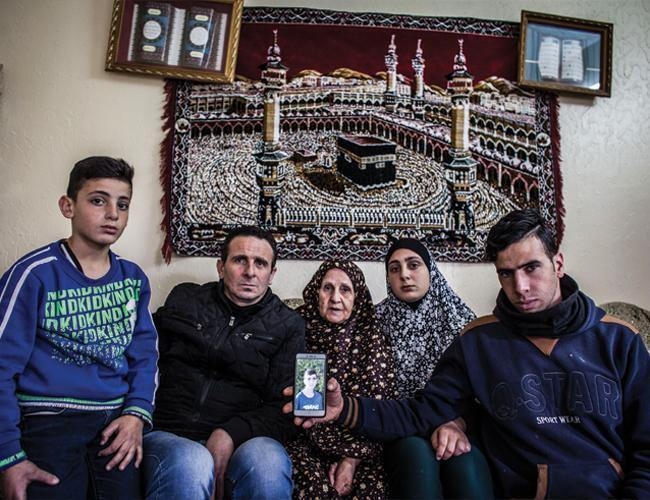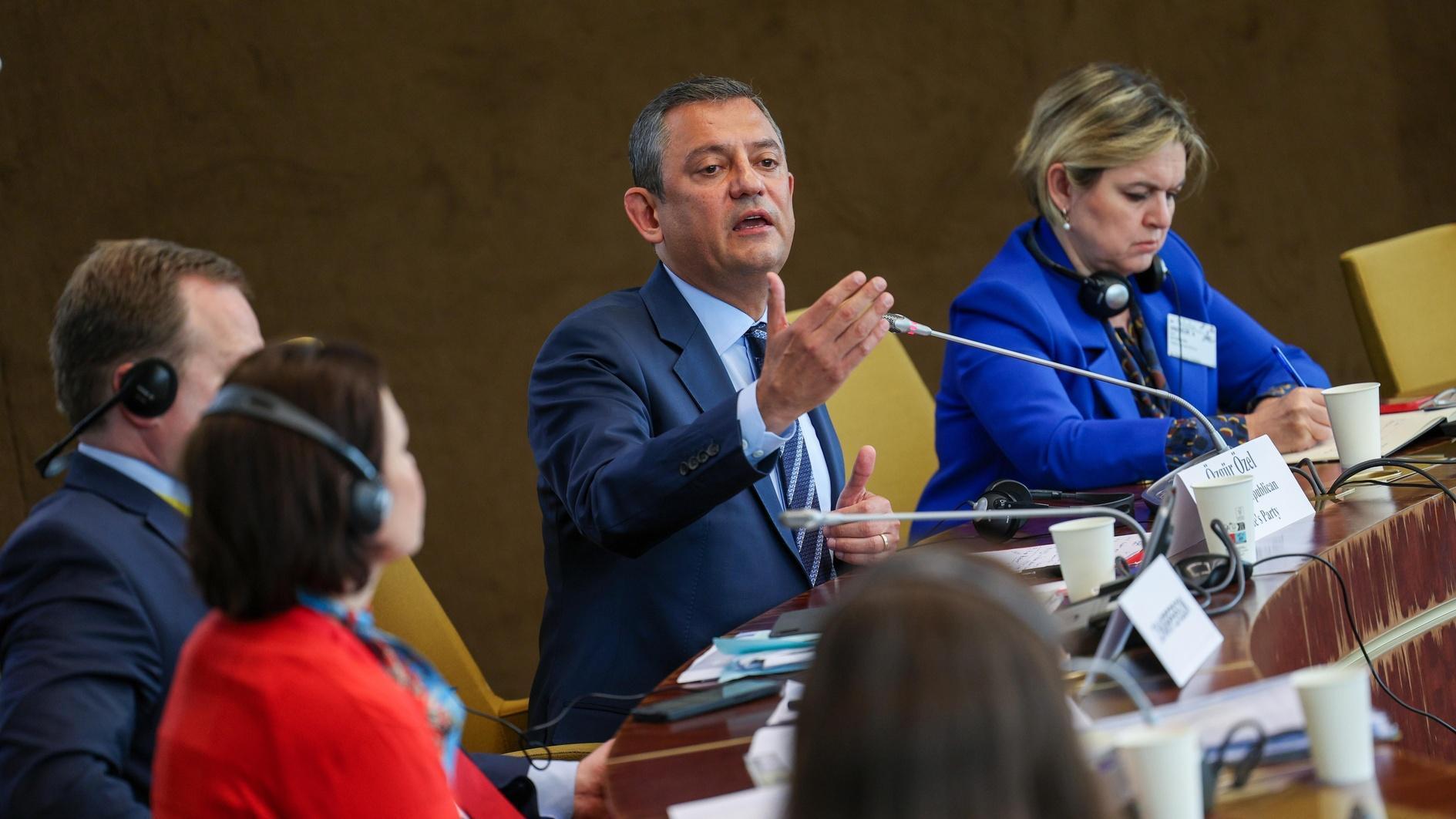16-year-old Palestinian boy Fevzi becomes symbol of Jerusalem resistance
Sevil Erkuş - HEBRON

A picture of a young blindfolded boy surrounded by around two dozen Israeli troops before being detained has been the highlight of massive street protests by Palestinians after the recognition of Jerusalem as the undivided capital of Israel by United States President Donald Trump. Sixteen-year-old Fevzi al-Junidi is still being kept in a prison in Ofer, Israel.
I had a chance to visit Fevzi’s family in their house in the West Bank. They are not hopeful their son will be released soon because he is accused of throwing stones to Israeli security forces during the protests.
Mohammed al-Junidi, Fevzi’s father, explains that his son had to quit his education two months ago in order to assist the family’s livelihood, as he can no longer work due to health reasons. Fevzi did not join the protestors, he says, but was out to supply the needs of the family from the market.
“They kept Fevzi blindfolded in order to frighten him and all other protestors. This is something Israeli security forces do often,” al-Junidi said.
Fevzi’s family could not receive news from him for a week, as his detention period had been extended another week. It is known that he was taken to a medical facility as he was battered by security forces. He is expected to appear before the court this week.
“Every day since his detention, someone comes to our house to visit us. The mayor has presented us with a plaque but what we want is to have our son back as soon as possible. We are a family of seven. His mother has been traumatized because of the shock. We need Fevzi because he is the one who brings most of income to the family,” al-Junidi stressed.
Fevzi’s family grateful to Turkey
On ongoing political discussions over the Jerusalem and Palestinian cause, Mohammed al-Junidi expressed his gratitude to the Turkish support. Reshad al-Junidi, Fevzi’s uncle, recently joined a meeting on Palestine in Ankara, he informed.
“Whatever Trump says, Jerusalem belongs to Muslims and will remain so. I feel proud because there is such a leader like [President Recep Tayyip] Erdoğan in the Islamic world. He has supported our son. Erdoğan has invited us to Turkey. I could not go because of my health, but Fevzi’s uncle could,” he said.
Erdoğan had harshly blasted Israeli officials for battering a teenager while blindfolded, accusing Israel of being a “terror state.”
Situation very volatile in al-Khalil
The Al-Junidi family lives in al-Khalil where Palestinians and Jews reside together. The other such city is Jerusalem. Although al-Khalil is in the West Bank, it’s a city where Israeli occupation can best be observed in concrete form.
Following a deal between Israel and Palestine in 1997, al-Khalil was divided into two divisions, H1 and H2. Eighty percent of the city is under Palestinian control with a population around 200,000. The other 20 percent is under the control of Israeli security forces. Israel now controls the H2 division of the city where 800 Jewish settlers and 40,000 Palestinians live.
The H1 and H2 districts are divided through check points. Foreigners can easily pass from one district to the other but Palestinians do not have flexible freedom of movement.
Each and every Palestinian living in H2 has an identification document associated with the serial number of the house he or she resides in. Palestinians may pass from H1 to H2 by foot only after presenting their documentation. In return, they need be checked at the checkpoint.
Even when going out for a breath of air, they need to keep their document with them if they do not want any trouble. Palestinians living in certain districts in H2 are not even allowed to go out of their homes during religious Jewish holidays.
Ghost streets of al-Khalil
When we move from H1 to H2—where the Old City is located—we are met with ghost streets full of stone houses. We were told that Jews living in this district are more radical and hardliners. A Jewish man whom I had the chance to talk said he had come to the Old City to practice his religion. Underlining that he is a “religious” person, he refused to shake my hand.
At the center of al-Khalil is the al-Shuhada Street whose entrance was blocked and under the control of Israeli troops. Palestinians are not allowed to enter and their shops have been shut down. This street was allocated to Jewish settlers as Palestinians were removed after the second intifada.
But there are still very few Palestinians living in those streets. A Palestinian flag can be observed on one of the balconies, but all the doors have been marked with the Star of David. Their windows are behind wire fences for protection from stones thrown by Jewish settlers.
Palestinians living in this district cannot work and cannot operate their shops. They can support themselves only with monthly allowances provided by the Palestine government. The idea is that they should not quit the district as they pass a test of bravery and strength every day.
According to the figures provided by the United Nation’s Office of Coordination of Humanitarian Affairs (OCHA), there are 110 restrictive measures, including 18 permanent and 14 temporary check points, imposed by Israel against Arabs in al-Khalil. One third of Palestinians have had to leave their houses and around 500 shops have been closed upon Israel’s instructions. Some 1,100 shops have been closed because there were no longer customers.
















